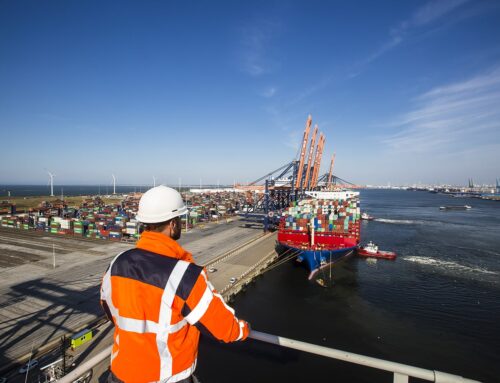
European Supply Chain Pulse: This Week’s Lessons and Next Week’s Outlook
Europe’s supply chains continue to tighten around three priorities: seamless collaboration, automation, and data-driven decision-making. This week we observed trends that shape planning for the next seven days, and we highlight concrete actions for European managers using Tradecloud’s platform.
Below you will find concise insights on recent events, geopolitical influences, price dynamics, and a KPI theory gaining attention across European teams.
Recent supply chain events this week
Key patterns emerged as European operators navigated demand peaks, capacity shifts, and resilient execution:
- Port congestion and hinterland delays increased lead times in Northern Europe, pushing some orders toward tighter safety stock and more frequent replanning.
- Container routing adjustments persisted due to temporary service gaps on certain lanes, underscoring the value of real-time visibility and scenario planning across multi-party networks.
- Digital collaboration accelerators gained traction, with more teams linking planning, procurement, and logistics via cloud platforms to shorten cycles and reduce manual touchpoints.
Geopolitical issues impacting supply chains
Geopolitics continues to shape European resilience. Watch these themes as you plan for the coming week:
- Energy security and transport costs remain top-of-mind as European energy markets remain volatile, affecting fuel surcharges, inland transport prices, and overall cost-to-serve.
- EU policy and sanctions dynamics influence supplier diversification and risk exposure. Firms are re-evaluating supplier footprints and nearshoring options to reduce exposure.
- Global alignment and risk routing decisions increasingly hinge on alternative sourcing and multi-region visibility to prevent single-point disruption.
Commodity and container price dynamics
Price movements continue to shape buy, ship, and store decisions. Here are the current signals European managers should monitor:
- Container freight rates remain volatile but show patches of relief as capacity discipline and fleet optimization take effect; expect continued sensitivity to seasonality and port congestion.
- Commodity prices for metals, energy, and agri inputs exhibit fluctuations driven by energy markets and input scarcity; risk-adjusted procurement and hedging strategies are increasingly relevant.
- Freight-related surcharges (fuel, terminal handling, and currency-related adjustments) can compress or extend working capital cycles; track total landed cost in your planning models.
A KPI theory that recently gained attention in SCM
Alongside traditional metrics, a growing discourse centers on the Decision Quality (DQ) KPI framework for supply chains. The idea is simple but powerful: a KPI is only as good as the decisions it drives. The theory emphasizes four levers:
- Data quality — accuracy, completeness, and timeliness of inputs feeding the KPI.
- Insight actionability — metrics should point to clear, executable actions rather than abstract targets.
- Decision speed — the time from data capture to decision implementation matters for resilience and cost-competitiveness.
- Impact clarity — connect KPI outcomes to tangible business value, such as service level improvements or working capital changes.
In practice, teams combine this framework with real-time dashboards, Tradecloud-driven collaboration, and automation to shorten the cycle from insight to action. The aim is not a perfect score, but higher decision quality over time.
Practical takeaways for European managers
- Prioritize end-to-end visibility across suppliers, carriers, and internal teams to reduce the time-to-decision.
- Embed data governance and data quality checks into daily routines so KPI readings are trustworthy.
- Run weekly S&OP cycles with live scenario planning to stay ahead of volatility in rates and demand.
- Invest in automation that converts insights into action, such as automated re-planning, dynamic routing, and supplier risk alerts.
Conclusion and actionable takeaways
European supply chains are at a crossroads where speed, reliability, and transparency will define competitive advantage. For 2025, the most resilient teams combine Tradecloud’s cloud collaboration with a clear Decision Quality framework to turn data into fast, confident actions. Focus on three shifts this week:
- Adopt time-to-decision dashboards that fuse supply and demand signals.
- Reinforce data quality as a precondition for trustworthy KPI readings.
- Scale automation to reduce manual re-planning and accelerate collaboration with suppliers and carriers.



